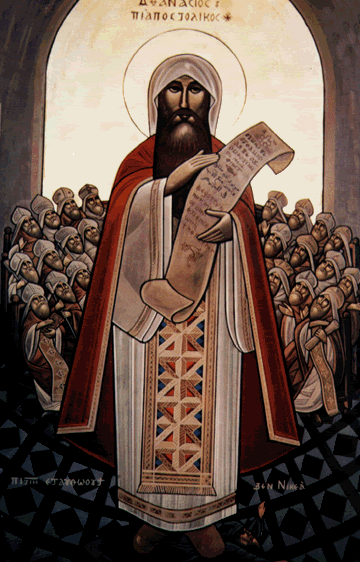The term Gnostic gets thrown around and everyone thinks they know what each other are saying. There was a cult called Gnostic.
But the word simply means knowledge. There is a mystery hidden in the OT which is revealed in the new. The OT is like a Where's Waldo book, but no one knew to look for Waldo until he time of the cross. Jesus said that all the scriptures spoke of him.. not in some generic preparation of the ages, but specifically of him. This is the "mystery hidden from the beginning".
Isa 43:10 Ye [are] my witnesses, saith the LORD, and my servant whom I have chosen: that ye may know and believe me, and understand that I [am] he: before me there was no God formed, neither shall there be after me.
Ro 10:17 So then faith [cometh] by hearing, and hearing by the word of God.
Ro 10:14 How then shall they call on him in whom they have not believed? and how shall they believe in him of whom they have not heard? and how shall they hear without a preacher?
Faith is based in knowledge of God. There is nothing bad about knowledge. There is nothing wrong with seeing Christ in all the scriptures (an ability lost to most).
So much of the teaching of the mystery of Christ is misidentified as Gnosticism.
Luke teaches us to read the mystery:
In Acts 12, Luke demonstrates his knowledge of the Hebrew concept of the secret layer of scripture called ‘sod’ (pronounced with a long ‘o’). The reason he wrote it is to make a demonstration to the Greeks HOW the Hebrews see Christ in the Old Testament scriptures. The Gospels reveal the sod of the Old Testament, and Luke writes a sod from the gospels. The sod always speaks of Christ. Even the Rabbis say that the Messiah is, or reveals, the sod.
Here is a brief overview of the secret concerning Jesus:
Herod vexed Christ
Herod vexed the body of Christ (the church)
Jesus was arrested the week before Passover
Peter was arrested the week before Passover
Jesus was set between two (thieves)
Peter was set between two (guards)
A light shown in the tomb
A light shown in the cell
Jesus was poked in the side
Peter was poked in the side
Three barriers to escape (two days in death and the stone which was opened on the third day)
Three barriers to escape (two sets of guards and a gate)
The stone opened itself
The gate open itself
The first person Jesus saw was Mary
Peter went to Mary’s house
The woman who met Jesus (Mary) ran to tell the disciples
The woman who met Peter (Rhoda) ran to tell the disciples
She was told she was crazy
She was told she was mad
When Jesus finished visiting his disciples he went to another place
When Peter finished visiting the disciples he went to another place
There is also a riddle: At the beginning of Chapter 12 we are told that James was killed by Herod. At the end, Peter says to go tell James. Those who died before the cross, rose with Christ.
Luke wrote Acts 12 in such a way as to hide a secret picture of Christ within. He used the historical facts as prophetic riddle pointing back to the cross. He did this to teach us how to read the Old Testament.
Genesis 38 has been called the worst chapter of the Bible, but it contains a beautiful picture of the birth of Christ.
Tamar met Judah before Timnath (the appointment) (Ge 38:14)
Mary met God before the appointed time of Christ. (Heb 9:27)
Tamar was offered a goat by Judah. (Ge 38:17)
The angel told Mary “He will save his people from their sins.” (Mt 1:21) These words are used of the scapegoat.
Tamar wanted an assurance that she would receive the goat, (Ge 38:17)
Mary asked for an assuring word of explanation. (Lk 1:34)
Tamar was given the staff or rod which represents the power of God in discipline. (Pr 22:15, Pr 23:13, Pr 29:15)
Mary was told the power of the Highest would overshadow her. (Lk 1:35)
Tamar was given the signet ring. (Ge 38:18) A signet ring declares the wearer to be a son.
Mary was told that he would be called the Son of God. (Lk 1:35)
Tamar was given bracelets. (Ge 38:18) Bracelets cover an empty vessel to keep it clean.
Mary was told that she was not unclean because although she was with child, it was by the Holy Ghost. (Lk 1:35)
Tamar bore twins (Ge 38:27)
Mary bore the dual-natured God-Man. (Joh 8:58)
The names of the twins mean ‘breaking forth’ and ‘rising sun’
Jesus was called Dayspring.(Lu 1:78)
The second son was born first (Ge 38:28-29)
Jesus is the second Adam (1Co 15:45-47)
And he knew her again no more (Gen 38:26)
Jesus was the only begotten son. (Joh 1:18)
These are part of the mystery with was revealed in Christ Jesus. They are specific prophecies of him. And they aren't Gnostic. These were taught privately because the subtlety made it easy to get confused and fall into free-for-all allegory if rigorous rules were not followed. I would have to dig, but I believe it was Clement who said he taught things in person that he would not write down, for this reason.


